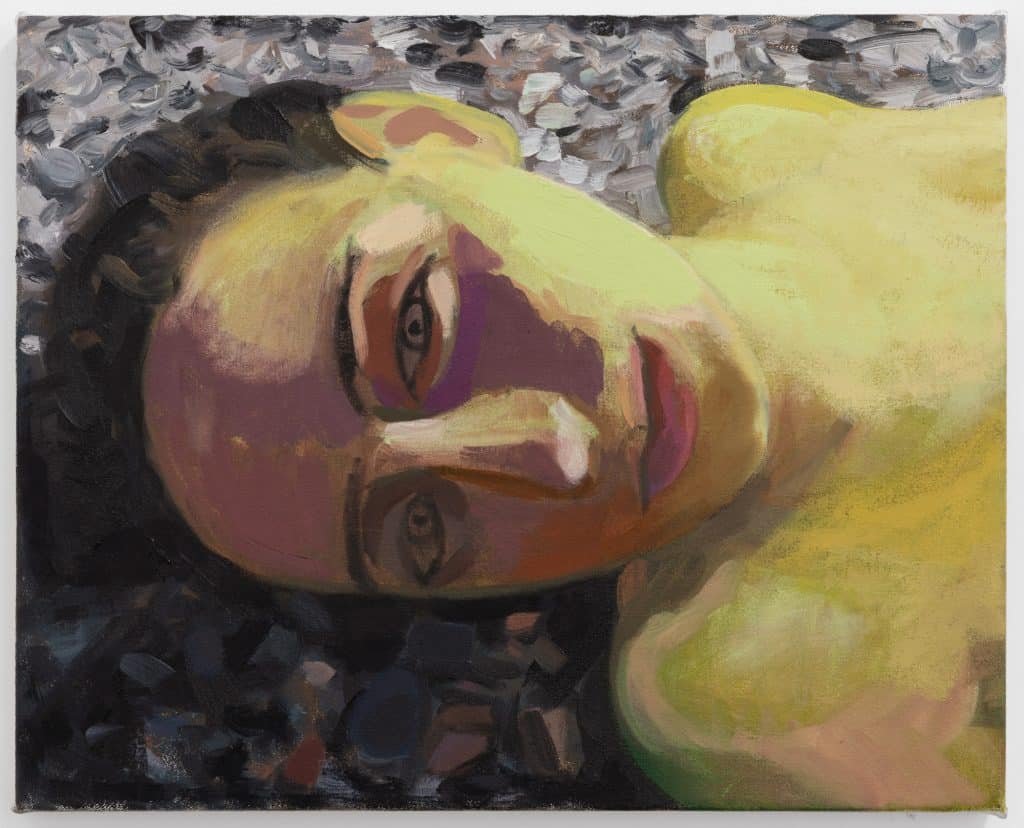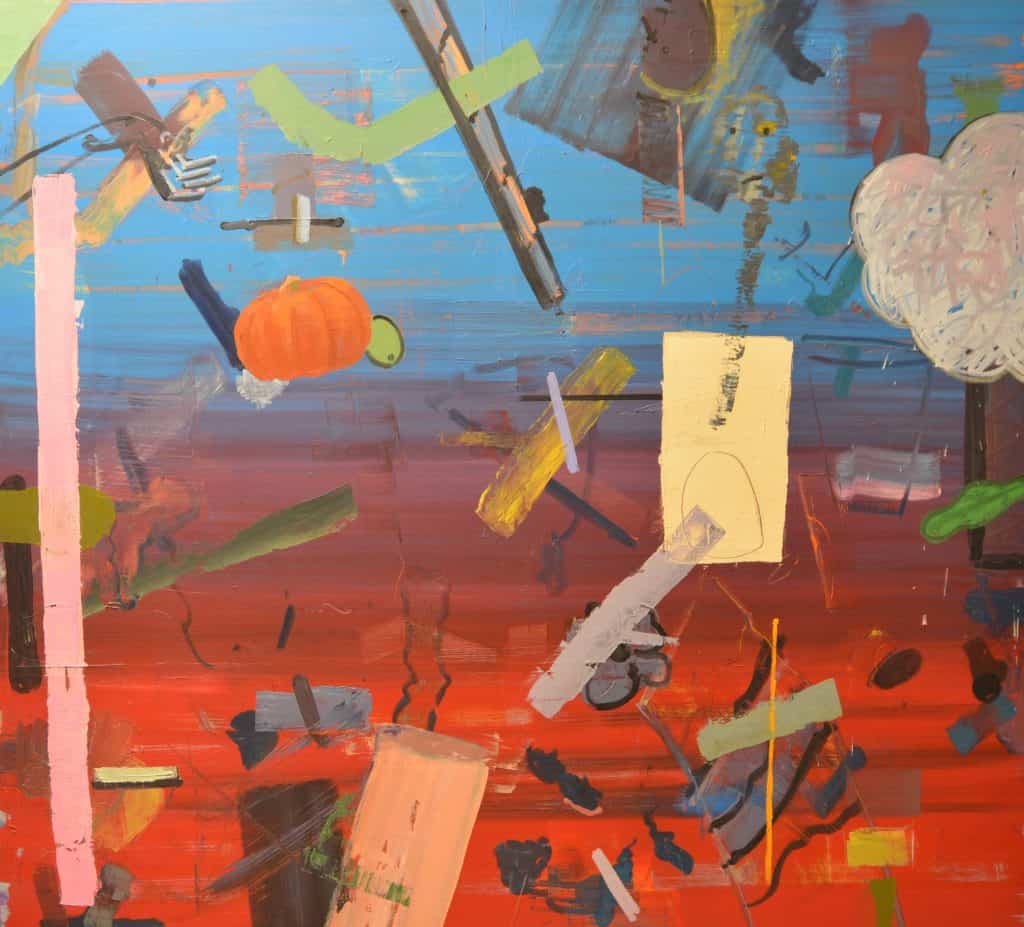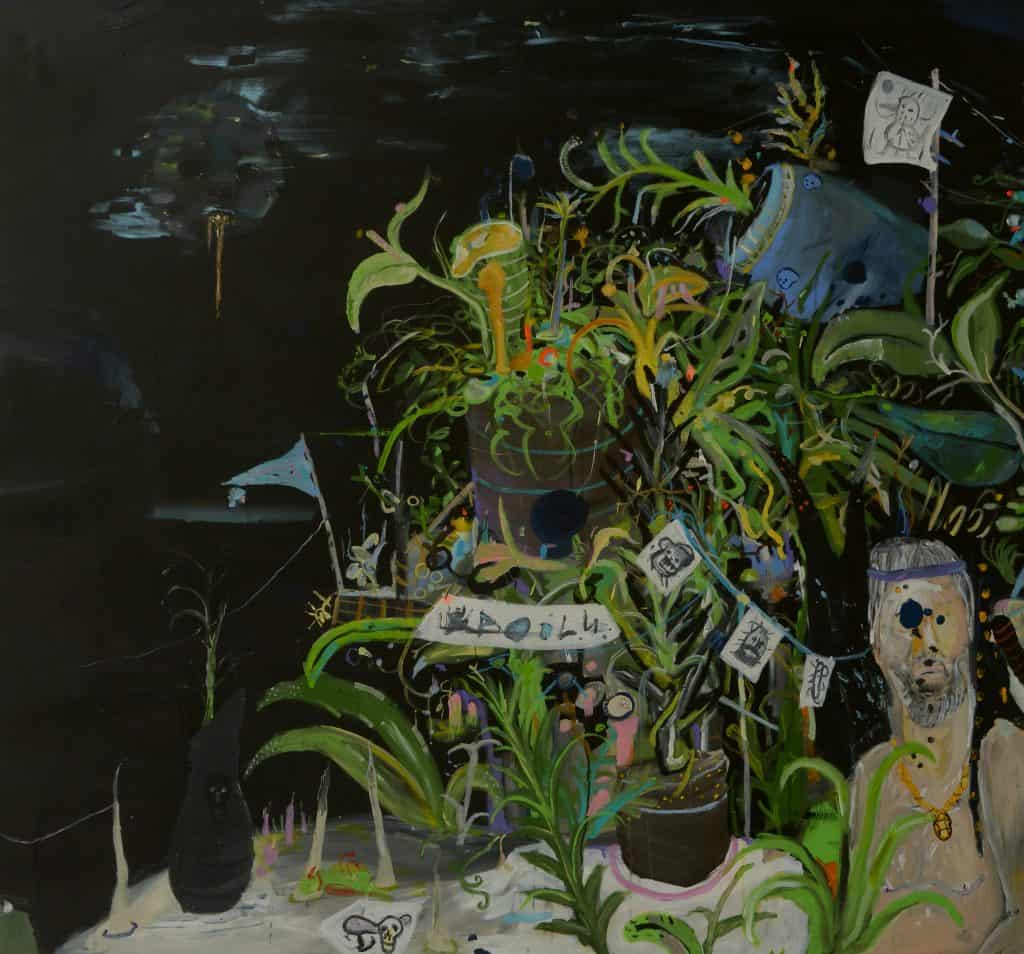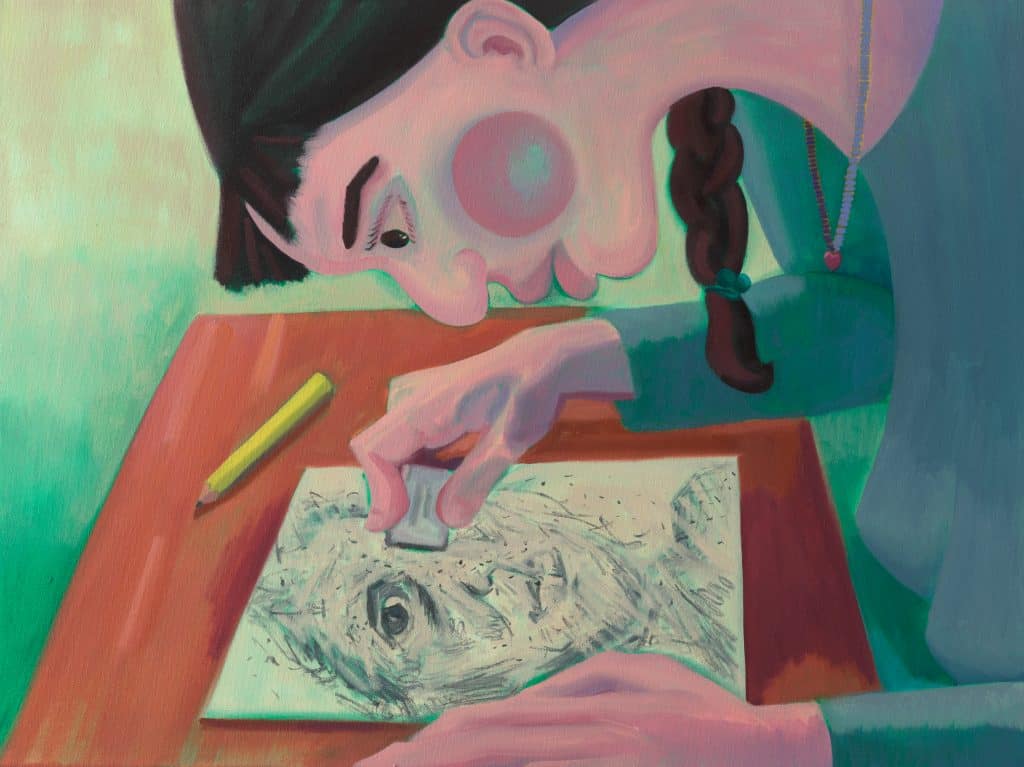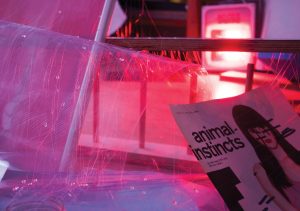The year’s opening exhibition at the Beeri Gallery mirrors the turbulent, intense, and nightmarish period we live in, a reality of a worldwide pandemic, escalations, and government changeover. How do the painters in their studio react to the surrounding reality? Do they look at the world or shut themselves in the studio and in the pictorial process? The artists presenting at the exhibition come from different backgrounds. Still, the blatant color patches, free and wild color placements, daring vividness, motifs of dismantling and fragments, shattering, visual load, and lots of humor and irony, are common to their works. The gallery is overflowing with the artists’ tumultuous paintings, creating engaging connections between the pieces. The exhibition presents works by five artists, all about 40 years old. It seemingly samples and exposes a painters’ generation’s painting narratives and styles and beckons a convergence and conversation about contemporary Israeli painting.
The exhibition emanated and matured from an encounter with Alon Kedem’s paintings and a conversation with him. Yonatan Amir writes in his blog about Alon Kedem’s painting, something that is true, in my opinion, of all the painters in the exhibition:
” There’s an attempt to give meaning to the pictorial action in an age where the painting’s death and resurrection have already become a cyclical cliché. The last hundred years have created countless deaths, eulogies, and rebirths of the painting and turned any educated painter with historical awareness into an involuntary bearer of the medium’s burden of promises, successes, lies, and ruins. Like many artists of his generation, Kedem thus begins his work wandering in the modernist and post-modernist painting junkyard. Wandering the junkyard enables the painter to explore the mess. Still, by looking at the paintings, it is hard to argue that exploring the mess makes them orderly… Already at its beginning, it contains both the ruins of the first half of the 20th century’s painting and the gestures of quotation, fragmentation, and pastiche created in its’ second half.”
Alon Kedem exhibits his “meandering” paintings. A dense collection of stains, lines, and colors. Questionably abstract gestures piled onto a pictorial round cluster at the painting’s center, and parts of a pile that cracked from within splashed on another canvas. Now its remains are hovering throughout the picture. These are order-disturbing images that present a chaotic and amused world, a world comprised of crises scattered throughout the pictorial space. Alon Kedem’s painting expresses a desire to paint, a joy of doing and enthrallment, celebrating the wallowing in colors and images and playing with them.
Gabriella Klein paints dramatic, large-scale pictures. She takes details from her familiar home environment from their usual context, treating her family members as sculptural bodies or primordial dreamlike creatures.
Her paintings feature landscapes and portraits, characterized by a figurative approach, intense colors, and an emphasis on the painting’s materiality. Heavy color placement that almost deconstructs the image is evident in her works.
Noam Wenkert, too, paints from looking outwards to the world outside the studio and also from looking at the creative process itself. In the exhibition, the artist in her studio narrative is prominent; painting lessons and domestic still-life become a celebration of colors and stains, distortion and exaggeration, and a humorous look at her character as an artist, a mother, a person. Aiming to bring the painting together with reality. Alongside her studio work, Wenkert examines the connection between painter, artwork, and audience in a series of ‘pictorial actions.’
Rotem Rozenboim paints a picture abundant with color, details, and stories; a juggling, childlike and wild painting, violent and disturbing, which creates a kind of overflow, an exaggerated scene of disasters. It’s part of his experience in the world and how he usually works. His characters are ridiculous and grotesque and, at the same time, human. The painting stretches reality, disassembles, disrupts, and distorts it. It is simultaneously disturbing and gloomy, blunt and soft, funny and colorful.
The human characters, the paintings’ protagonists, are distorted and disruptive. The disruption is part of his game, up to a breaking point, creating new combinations and meanings.
Boaz Leventhal, too, presents the “Romantic Theater” in which he lives. The grotesque figures are part of the set. An internal struggle between dreams, fantasies, demons and imaginary creations is buried on the canvas under copious layers of paint as part of the creative process of destructing and constructing the painting. The hybrid mixing of those crossbreeds, their twisted bodies, and the masks behind which they hide thwart any attempt to unequivocally determine the characters’ social status. Their gender, age, or even a clear and conclusive decision about their zoological origin, whether they belong to the human world or animal kingdom. Boaz Leventhal’s paintings’ colorfulness is different from that of the other painters in the exhibition. It is darker and vaguer, but the stained pictorial language, the characters’ grotesqueness, the disturbing world, visible in his paintings, blends in with the other works.
The exhibition allows the viewer to peek inside the world of contemporary Israeli painting and creates a fascinating encounter between painters in the gallery, outside the studio walls.


